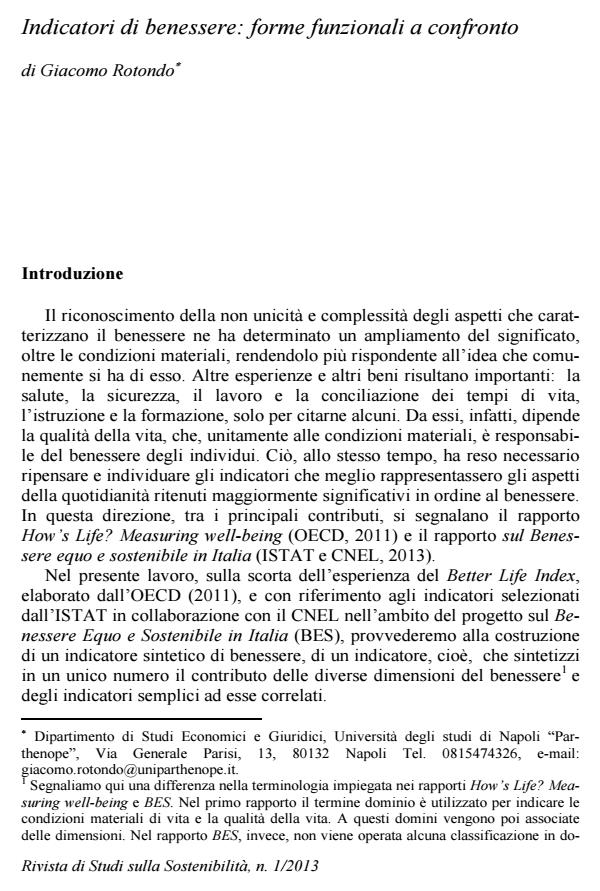Well-being indicators: a comparison of functional forms
Journal title RIVISTA DI STUDI SULLA SOSTENIBILITA'
Author/s Giacomo Rotondo
Publishing Year 2013 Issue 2013/1
Language Italian Pages 15 P. 27-41 File size 280 KB
DOI 10.3280/RISS2013-001003
DOI is like a bar code for intellectual property: to have more infomation
click here
Below, you can see the article first page
If you want to buy this article in PDF format, you can do it, following the instructions to buy download credits

FrancoAngeli is member of Publishers International Linking Association, Inc (PILA), a not-for-profit association which run the CrossRef service enabling links to and from online scholarly content.
In this work, once thirty-six simple indicators were selected, including those proposed by ISTAT in collaboration with the CNEL in the project Benessere equo e sostenibile in Italia, and eight dimensions of well-being, consistent with them, were identified, it was decided to build, to each of the twenty Italian territorial areas considered, a synthetic indicator of well-being. To aggregate into a single number the scores obtained on each dimension, reflecting the contribution of the corresponding simple indicators, reference was made to two functional forms, the weighted arithmetic mean and the weighted geometric mean. With regard to the results obtained for the years 2005 and 2009, a total of four rankings of geographical areas, two for each functional form, were produced.
Keywords: Dimensions, indicators, functional forms, well-being, ranking, Italian regions.
Giacomo Rotondo, Indicatori di benessere: forme funzionali a confronto in "RIVISTA DI STUDI SULLA SOSTENIBILITA'" 1/2013, pp 27-41, DOI: 10.3280/RISS2013-001003